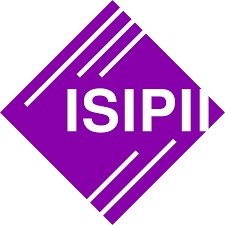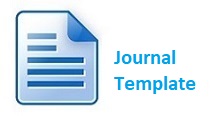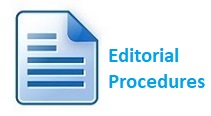A bibliometric analysis of research trends in health communication on social media during the COVID-19 pandemic
Abstract
Background: The COVID-19 pandemic has significantly transformed how the public accesses and disseminates health information. In this emergency context, social media emerged as a primary channel for health communication due to its ability to reach audiences quickly and widely. However, the high volume of information on social media also triggered a surge in misinformation and disinformation, potentially disrupting pandemic mitigation efforts.
Purpose: To understand how this issue evolved in the scientific literature, this study aims to analyze the trends and patterns of research on health communication through social media during the COVID-19 pandemic.
Methods: This research applies a bibliometric analysis method with a quantitative descriptive approach, utilizing the Biblioshiny application based on R to analyze 321 articles obtained from the Scopus database within the 2020–2024 period. The analysis includes annual publication trends, average citations per year, identification of key authors and journals, keyword mapping, and distribution of contributions by country and institution.
Results: The highest number of publications occurred in 2021, with dominant topics such as “COVID-19,” “social media,” and “public health.” The United States stands out as the leading country in both publication output and citation impact, while the Journal of Medical Internet Research was identified as the most productive journal.
Conclusions: Social media plays a strategic role in health communication during the pandemic, and this study reveals the globally evolving structure and dynamics of the scientific discourse. It is expected to contribute to the development of more effective, evidence-based digital health communication policies.
Keywords
Full Text:
PDFReferences
Brainard, J., & Hunter, P. R. (2020). Misinformation making a disease outbreak worse: Outcomes compared for influenza, monkeypox, and norovirus. SIMULATION, 96(4), 365–374. https://doi.org/10.1177/0037549719885021
Büyükkidik, S. (2022). A bibliometric analysis: A tutorial for the bibliometrix package in r using irt literature. Eğitimde ve Psikolojide Ölçme ve Değerlendirme Dergisi, 13(3), 164–193. https://doi.org/10.21031/epod.1069307
Chen, G., Su, W., Yang, J., Luo, D., Xia, P., Jia, W., Li, X., Wang, C., Lang, S., Meng, Q., Zhang, Y., Ke, Y., Fan, A., Yang, S., Zheng, Y., Fan, X., Qiao, J., Lian, F., Wei, L., & Tong, X. (2020). Chinese herbal medicine reduces mortality in patients with severe and critical Coronavirus disease 2019: A retrospective cohort study. Frontiers of Medicine, 14(6), 752–759. https://doi.org/10.1007/s11684-020-0813-6
Dewi, E. U. (2020). Faktor-Faktor yang mempengaruhi perilaku masyarakat dalam pencegahan penularan COVID-19. Jurnal Keperawatan, 9(2), 21–25. https://doi.org/10.47560/kep.v9i2.259
Donthu, N., Kumar, S., Mukherjee, D., Pandey, N., & Lim, W. M. (2021). How to conduct a bibliometric analysis: An overview and guidelines. Journal of Business Research, 133, 285–296. https://doi.org/10.1016/j.jbusres.2021.04.070
Esteban Ortiz-Ospina. (2019). The rise of social media. Our World in Data. https://ourworldindata.org/rise-of-social-media
Greenwood, S. (2024). Internet, smartphone and social media use. Pew Research Center. https://www.pewresearch.org/global/2022/12/06/internet-smartphone-and-social-media-use-in-advanced-economies-2022/
Hariyanto, D., Utomo, D. M. B., Sukmana, H., & Dharma, F. A. (2020). Konstruksi realitas makam dewi sekardadu dalam komunikasi pariwisata pro-poor di Sidoarjo. Jurnal Komunikatif, 9(2), 229–243. https://doi.org/10.33508/jk.v9i2.2704
Leydesdorff, L., Bornmann, L., Comins, J., Marx, W., & Thor, A. (2016). Referenced Publication Year Spectroscopy (RPYS) and algorithmic historiography: The bibliometric reconstruction of andrás schubert’s œuvre (Versi 1). arXiv, 79-91. https://doi.org/10.48550/ARXIV.1604.04705
Lisnarini, N., Rahman, A., Gobel, S. A. M., & Saputra, D. (2025). Pemetaan penelitian komunikasi terapeutik di Indonesia melalui analisis Bibliometrik berbasis aplikasi VOSviewer. Informatio: Journal of Library and Information Science, 5(1), 81–94. https://doi.org/10.24198/inf.v5i1.60271
Ortiz-Ospina, E. (2019). The rise of social media. Our World in Data. https://ourworldindata.org/rise-of-social-media
Pala, R., & Djaffar, R. (2022). Penggunaan media sosial dalam mengakses informasi COVID-19 (survey pada masyarakat Tamamaung Makassar). Al-Mutsla: Jurnal Al Mutsla, 4(2), 103–114. https://doi.org/10.46870/jstain.v4i2.279
Paramasari, S. N., & Nugroho, A. (2021). Strategi komunikasi kesehatan dalam upaya membangun partisipasi publik pada masa pandemi covid-19. Jurnal Lensa Mutiara Komunikasi, 5(1), 123–132. https://doi.org/10.51544/jlmk.v5i1.2036
Pulido, C. M., Villarejo-Carballido, B., Redondo-Sama, G., & Gómez, A. (2020). COVID-19 infodemic: More retweets for science-based information on coronavirus than for false information. International Sociology, 35(4), 377–392. https://doi.org/10.1177/0268580920914755
Sharma, A., Tiwari, S., Deb, M. K., & Marty, J. L. (2020). Severe acute respiratory syndrome coronavirus-2 (SARS-CoV-2): A global pandemic and treatment strategies. International Journal of Antimicrobial Agents, 56(2), 106054. https://doi.org/10.1016/j.ijantimicag.2020.106054
Silva, M. D. S. T., Oliveira, V. M. D., & Correia, S. É. N. (2022). Scientific mapping in Scopus with Biblioshiny: A bibliometric analysis of organizational tensions. Contextus – Revista Contemporânea de Economia e Gestão, 20, 54–71. https://doi.org/10.19094/contextus.2022.72151
Sjuchro, D. W. (2023). Trend research of rural broadcasting on communication science based on bibliometric approach. Journal of Intercultural Communication, 33–44. https://doi.org/10.36923/jicc.v23i1.110
Srisusilawati, P., Rusydiana, A. S., Sanrego, Y., & Tubastuvi, N. (2021). Biblioshiny R application on islamic microfinance research. Library Philosophy and Practice. 5096. https://digitalcommons.unl.edu/libphilprac/5096/
Tania, S., & Cahyono, H. (2022). Praktik social media pandemic communication model pada media sosial lembaga pemerintah. Jurnal Ilmu Komunikasi, 19(1), 1–18. https://doi.org/10.24002/jik.v19i1.3861
Triutomo, A. N., & Borut, H. B. (2021). Teknik dan media komunikasi kesehatan yang efektif dalam penyampaian informasi pencegahan dan vaksinasi COVID-19 pada remaja. Jurnal Kesehatan Pengabdian Masyarakat. 1, 43–48. https://doi.org/10.29238/jkpm.v2i1.1178
Wang, J., & Du, G. (2020). COVID-19 may transmit through aerosol. Irish Journal of Medical Science (1971), 189(4), 1143–1144. https://doi.org/10.1007/s11845-020-02218-2
Zakiyyah, F. N., Winoto, Y., & Rohanda, R. (2022). Pemetaan bibliometrik terhadap perkembangan penelitian arsitektur informasi pada Google Scholar menggunakan VOSviewer. Informatio: Journal of Library and Information Science, 2(1), 43-60.https://doi.org/10.24198/inf.v2i1.37766
DOI: https://doi.org/10.24198/inf.v5i3.63500
Refbacks
- There are currently no refbacks.
Copyright (c) 2025 Nurmalina Rahmita Putri, Agus Rusmana, Edwin Rizal

This work is licensed under a Creative Commons Attribution-ShareAlike 4.0 International License.
Informatio Indexed by:
Editorial Office :
Library and Information Science Study Program, Building 3 Floor 2, Faculty of Communication Science, Universitas Padjadjaran
Jl. Raya Bandung Sumedang Km. 21 Jatinangor, Sumedang 45363
Principal Contact :
Phone : 08122184219
Email : rully.khairul@unpad.ac.id

 ,
,




2.png)


